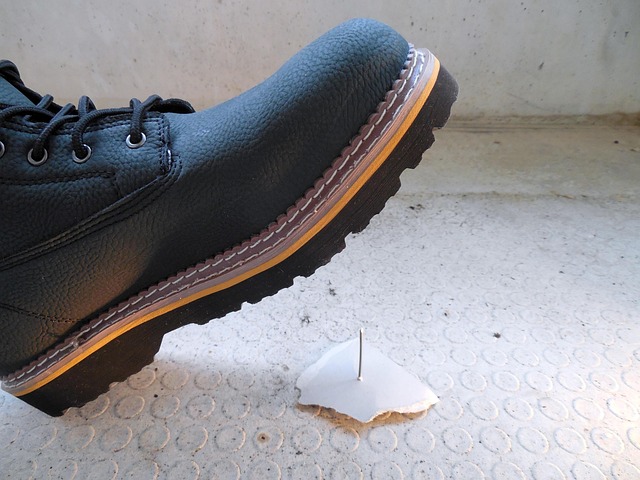Platelet-rich plasma (PRP) offers a natural, sustainable solution for sports injury recovery compared to cortisone injections. PRP, derived from the patient's blood, concentrates growth factors to stimulate tissue repair and regeneration for tendonitis, sprains, muscle strains, and cartilage damage, providing longer-lasting pain relief with minimal downtime.
In the realm of sports medicine, finding effective solutions for athletes’ injuries is paramount. Two popular treatments gaining traction are Platelet-Rich Plasma (PRP) and cortisone injections. This article delves into these options, offering insights on their distinct benefits and drawbacks for accelerated sports injury recovery with PRP as a natural alternative to conventional methods. By exploring understanding PRP, the mechanics of cortisone injections, and a comprehensive comparison, athletes can make informed decisions for optimal long-term recovery.
Understanding PRP: A Natural Regenerative Solution
Platelet-rich plasma (PRP) is a natural, regenerative solution gaining popularity among athletes for sports injury recovery. It’s derived from the patient’s own blood, where a concentrated amount of platelets are extracted and injected back into the injured area. Platelets are known for their role in blood clotting but also contain growth factors that stimulate tissue repair and regeneration. This makes PRP an effective treatment option for various athletic injuries, including tendonitis, ligament sprains, muscle strains, and articular cartilage damage.
Unlike cortisone injections, which suppress inflammation but may have potential long-term side effects, PRP offers a more natural approach by harnessing the body’s inherent healing mechanisms. The procedure is usually non-invasive, with minimal downtime, making it an attractive choice for athletes seeking to regain functionality without compromising their health.
Cortisone Injections: Quick Pain Relief but Temporary
Cortisone injections have long been a go-to option for athletes seeking quick relief from acute or chronic pain associated with sports injuries. These injections work by reducing inflammation and numbing the affected area, providing instant pain relief that can last anywhere from several days to a few weeks. However, their effectiveness is temporary, often requiring repeated treatments over time. This constant need for top-ups can be inconvenient and costly, not to mention the potential side effects associated with long-term cortisone use, such as muscle atrophy and joint degradation.
For athletes looking for a more sustainable solution for sports injury recovery with PRP (Platelet-Rich Plasma), the picture changes dramatically. PRP offers a natural approach that leverages the body’s own healing mechanisms by injecting concentrated platelets rich in growth factors directly into the injured area. Unlike cortisone, which only masks symptoms, PRP stimulates tissue repair and regeneration, promoting longer-lasting pain relief and faster recovery times. This makes it an increasingly popular choice among athletes seeking a safe and effective way to manage and recover from sports injuries.
Comparison: Efficacy and Side Effects of Both Treatments
PRP (Platelet-Rich Plasma) and cortisone injections have both gained popularity in the world of sports medicine for their potential to aid athletes recovering from injuries. When it comes to efficacy, PRP has been widely studied and shown to promote healing by delivering a concentrated mixture of growth factors directly to injured tissues. This can result in faster pain relief and improved tissue regeneration, making it particularly effective for soft tissue injuries common in athletes.
On the other hand, cortisone injections provide rapid anti-inflammatory effects, reducing swelling and pain associated with certain injuries. While cortisone is a powerful tool for acute inflammation, its long-term use is debatable due to potential side effects, including joint degradation and reduced bone density. In comparison, PRP offers a more natural approach with minimal side effects, making it an attractive option for athletes seeking long-term solutions for sports injuries and wanting to avoid the risks associated with steroid injections.
Long-Term Recovery: Choosing the Optimal Path for Athletes
For athletes, choosing the right path for long-term recovery from sports injuries is paramount. While cortisone injections offer quick relief, they may not be the best solution for sustained healing, as repeated use can lead to tissue damage over time. On the other hand, Platelet-Rich Plasma (PRP) therapy presents a promising alternative with minimal side effects and potential for accelerated recovery.
Studies suggest that PRP can stimulate tissue regeneration and reduce inflammation, making it an effective treatment option for athletes seeking long-lasting relief from chronic or acute sports injuries. By harnessing the body’s natural healing mechanism, PRP offers a more holistic approach to recovery compared to cortisone injections, potentially extending the athlete’s career and enhancing overall performance.
When it comes to treating sports injuries, athletes often seek effective, long-lasting solutions. While cortisone injections provide swift pain relief, platelet-rich plasma (PRP) therapy offers a natural, regenerative approach that may be more beneficial for long-term recovery in sports. By understanding the unique advantages and considerations of each treatment, athletes can make informed decisions to optimize their road to recovery with PRP.
